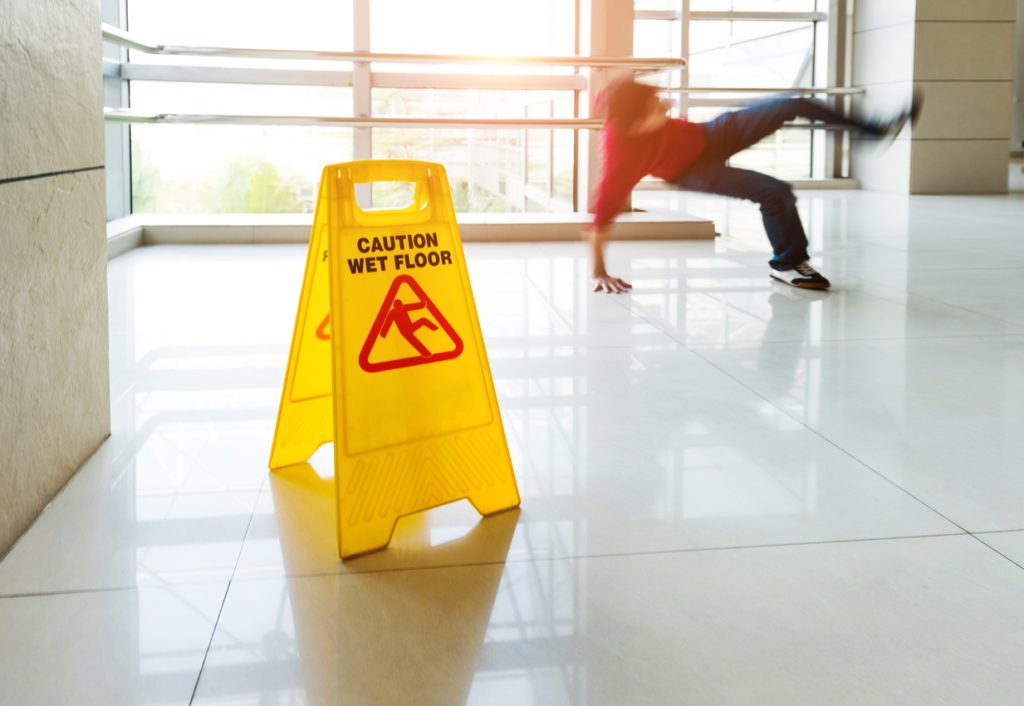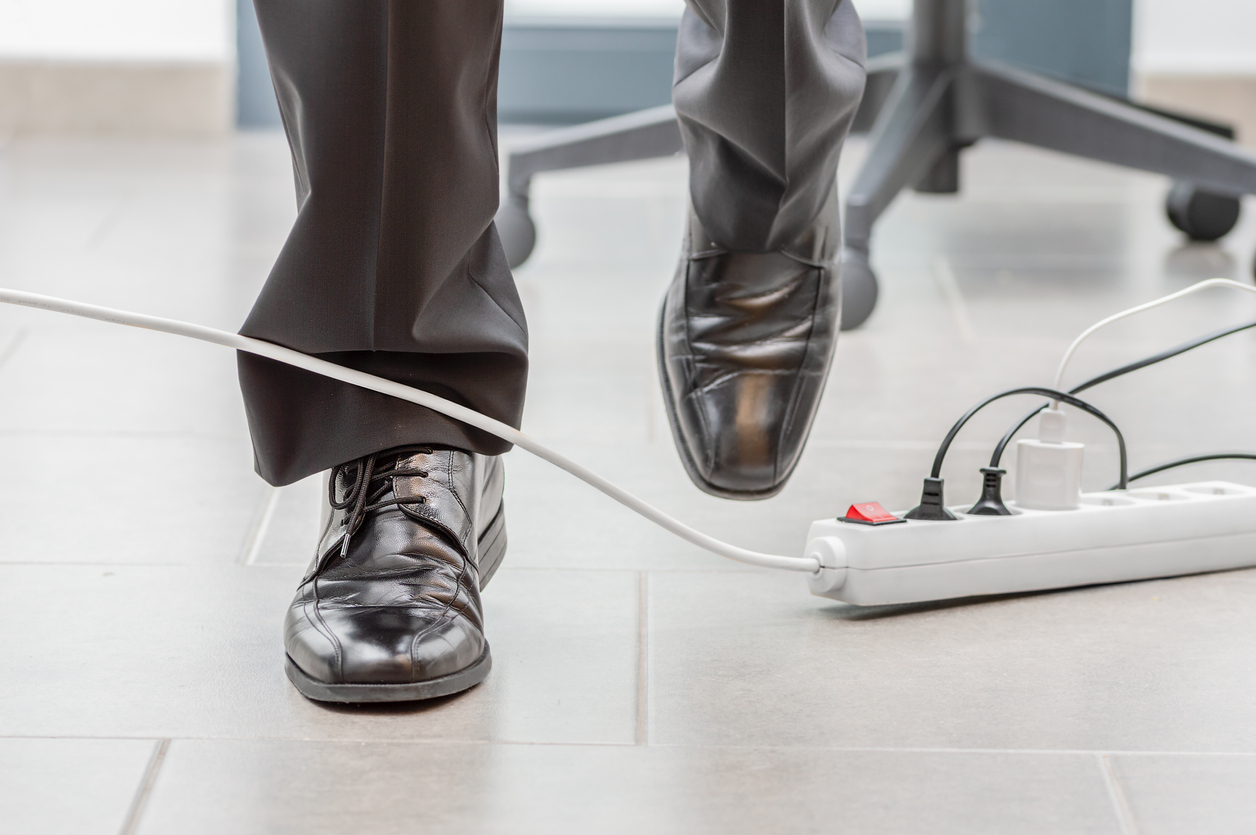Construction sites, massive equipment, and the inherent hazards of power tools all spring to mind when thinking about workspace safety.
Offices, on the other hand, seem to be the synonym for ultimate safety. But did you know that private business owners reported costs of 2.8 million dollars for non-fatal work-related injuries in 2019?
In every workplace, there’s a myriad of hidden hazards that lurk in every corner — even if your office is full of soft cushions and comfy sofas.
Every year, tens of thousands of office employees are sidelined due to accidents or health issues linked to their jobs. Injury risks may be lower than on a manufacturing floor or construction site. Still, they may be just as expensive for businesses.
Companies with industrial work environments have implemented highly regulated safety measures that show their effectiveness — and maybe it’s time for office-based companies to do the same.
Here are some of the most common and overlooked office hazards along with practical ways to keep your team from getting hurt or sick.
Ergonomics Issues
The majority of the corporate workforce spends over 35 hours weekly sitting at a desk, with the only activity being a click of a mouse or an adventurous hike to the coffee machine. Even with the most ergonomic and high-quality chairs, this can cause severe and long-term problems, especially for those with little to no physical activity outside of work.
Issues are usually hard to detect until it’s too late, and injuries ensue. Before you know it, you could have employees who are bedridden and on sick leave for months trying to recover from neck, wrist, or back problems.
To avoid this:
- Motivate your employees to move and walk more
- Organize short morning walks or 10-minute office yoga sessions
- Adjust chair and keyboard height so that your elbows are at a 90-degree angle when you’re typing
- Ask your employees for feedback and make sure they’re comfortable
Bad Air Quality
According to the NSC, asthma and other respiratory diseases, chemical sensitivities, and allergies are becoming more common due to poor indoor air quality.
There are several contributing factors to poor air quality, such as overcrowded offices with little or no ventilation (a recipe for disaster), harsh cleaning chemicals and pesticides, mold growth that stemmed from water damage, and overall poor hygiene in the work environment.
Thankfully, this hidden hazard has an easy fix. Ensure proper ventilation, maintain your air conditioning system, hire a professional team to clean and dust regularly, and consider getting air filters.
This will help reduce respiratory irritants, infections, and diseases. And before you know it, you will be able to get back to your morning breathing exercises.

Eye Strain
Working at a computer for extended periods may induce eye strain. You’ve probably experienced it yourself, after hours and hours of working on a laptop or binging your favorite TV show.
Dryness and irritation of the eyes can be very distracting for employees. For example, manual detail labor may require brighter lighting than computer work, according to the NSC, which recommends lower lighting levels for gazing at a display.
Close the curtains on the windows and lower the lights in the room to reduce glare. Eye strain may be reduced by placing displays at a comfortable distance from the user’s eyes, reducing screen glare, and increasing the size of computer fonts.
To prevent eye strain and tiredness, have your team take 10-minute breaks for every hour spent staring at a computer screen. During the break, they should concentrate on objects at various distances.
Slips, Trips, and Falls
While it can sound naive, don’t underestimate the danger of falling or slipping.
This might put things into perspective: According to the National Safety Council, employees are 2.5 times more likely to suffer a disabling injury due to falls in an office setting than they are in any other area of the workspace. Slips, trips, and falls cause almost all workplace injuries – which are nearly all easily avoidable.
Does your office cleaning company put out clear warning signs that the floor is wet right after cleaning it? If not, it’s time for them to do so. Wet floors are one of the obvious hazards, and it takes only one sign — and cautious employees — to prevent a fall.
Another major cause of this kind of injury is workers who reach for items in high locations haphazardly. Usually, they climb on office chairs that end up quickly rolling out from beneath them. It can also be that one old ladder that you kept in the office for way too many years that ends up breaking once an employee tries to climb it.
To prevent that, ensure that your team has stable and safe ladders that are easily accessible and in a place where everyone can see them.
One of the most overlooked factors that contribute to falls are tangled wires on the floor. Yes, we know it’s not easy to organize them, especially when employees are prone to changing their computers or desk locations. But to prevent unnecessary hazards, make sure to install the wiring and cables properly so nobody’s feet get twisted and tangled.
You could also consider hiring a professional cleaning company to keep everything in order if you haven’t partnered with them already. They will keep your floors decluttered and clean, minimizing the risk of slips and falls.
Avoiding Office Hazards
Most injuries happen in unusual places and when you least expect them.
Thankfully, many potential office hazards are easily eliminated with just a few prudent measures. Take care of your team’s comfort, ventilate every day, provide fresh and clean air, hide those wires, don’t forget the “Careful, the floor is wet” sign, and keep your entire workspace well-organized, decluttered, and clean.
Depending on the size of your business, you should consider hiring a professional cleaning company to ensure that your employees are safe and far away from hazards.
Professional cleaners can take care of your floor, dusting, ventilation, mold, and even wires. Plus, keeping your offices clean and orderly is a first step in making your workspace safe — and presentable.If you’re unsure whether it’s the right time to hire a professional cleaning company, here are some tips that can help you make the best decision suited to your company’s needs.

